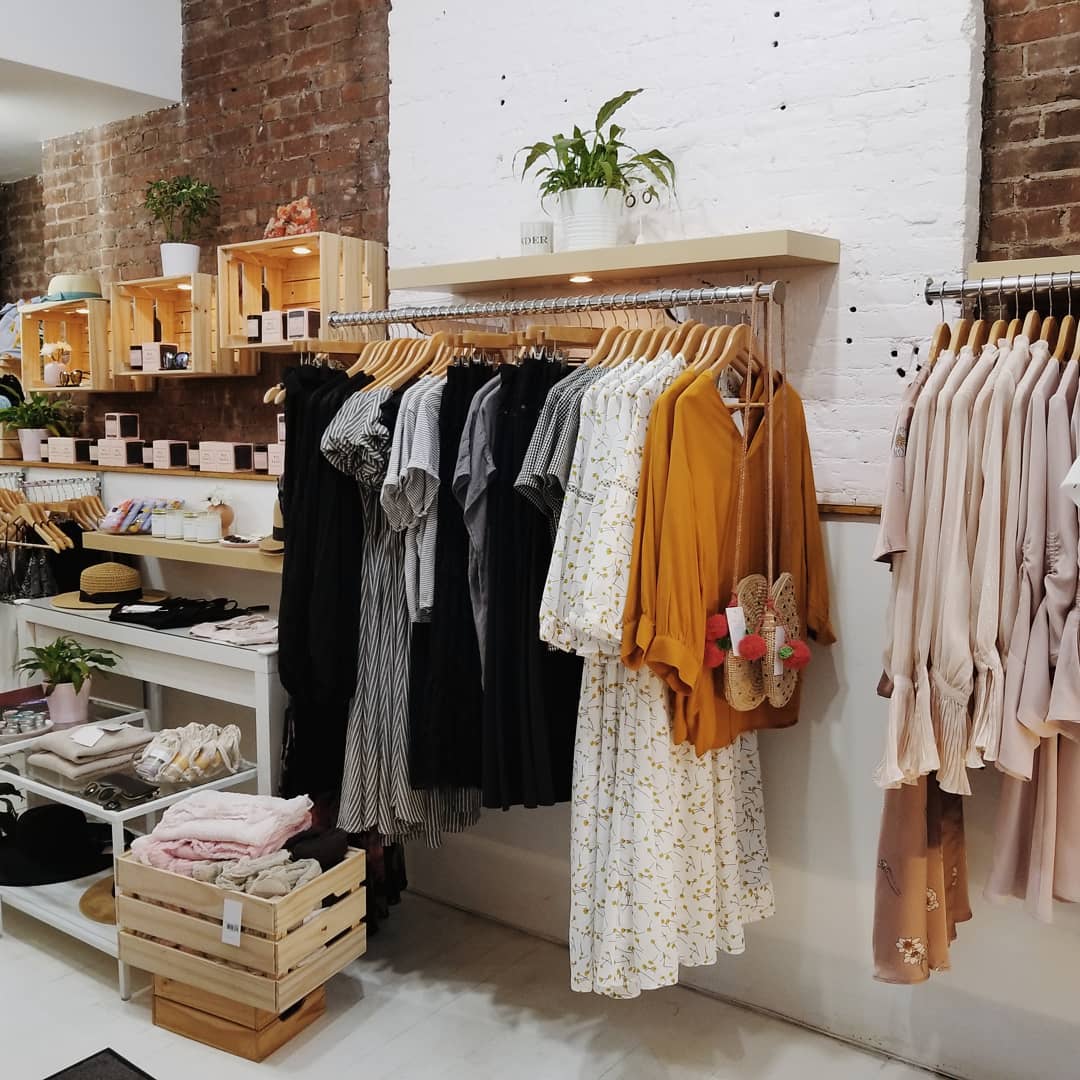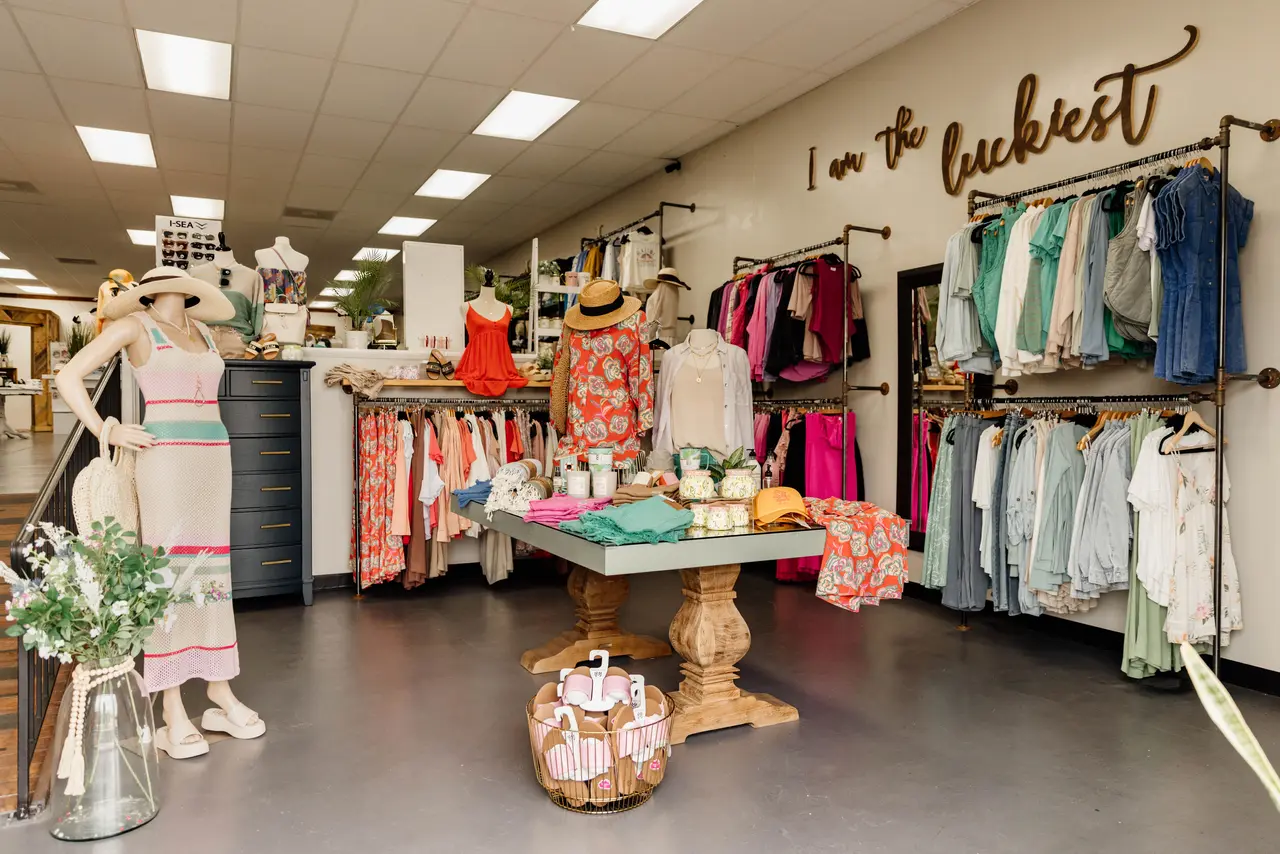The Surge of Online Purchasing: Searching For Boutique Fashion at Your Fingertips
The Surge of Online Purchasing: Searching For Boutique Fashion at Your Fingertips
Blog Article
Sustainable Fashion: Just How Eco-Friendly Clothes Is Shaping the Future of Style
As the apparel industry faces raising scrutiny over its ecological influence, the surge of lasting style supplies an appealing choice that aligns style with ecological duty. Utilizing ingenious products such as recycled fibers and plant-based materials, alongside sophisticated approaches like electronic and 3D printing, developers are redefining what it suggests to be classy in the modern age. Concurrently, the growing popularity of upcycling and second hand culture is promoting a change towards a round economy. Yet, just how does this activity genuinely influence the future trajectory of fashion, and what obstacles exist in advance in its extensive adoption?
Innovative Sustainable Materials
As the garment industry comes to grips with its environmental impact, cutting-edge lasting materials have become a critical service for minimizing ecological impacts. Among one of the most appealing products are those originated from all-natural, sustainable sources, such as natural cotton, hemp, and bamboo. These materials not only decrease dependence on nonrenewable fuel sources but likewise decrease damaging chemical use and water usage. Organic cotton, for example, makes use of significantly less water than standard cotton and eliminates the need for toxic chemicals, therefore preserving dirt health and biodiversity.
In enhancement to plant-based materials, developments in biofabrication have led to the development of lab-grown fabrics. Mycelium leather, stemmed from mushroom roots, provides a biodegradable and functional alternative to animal natural leather. Its production leads to substantially lower carbon exhausts and water use, making it an extra lasting alternative for designer seeking to align with environment-friendly methods.
Recycled products are additionally obtaining grip, with polyester made from recycled plastic containers standing for a substantial advancement. This development not only draws away plastic waste from garbage dumps and seas but also minimizes power usage compared to generating virgin polyester. With each other, these materials highlight the potential for a more lasting fashion sector, leading the method for ecologically conscious design and production.
Eco-Conscious Production
Building on the advancements in lasting products, the style sector is additionally re-evaluating its production processes to better lower environmental influence. Key approaches include lessening water usage, decreasing carbon exhausts, and getting rid of dangerous chemicals.
One more critical facet is the decrease of poisonous chemicals commonly used in dyeing and finishing textiles. Eco-conscious makers are changing towards plant-based dyes and waterless dyeing innovations, which not only safeguard local environments however likewise enhance worker safety. Developments like electronic printing reduce textile waste and power usage, providing a cleaner option to standard approaches.
Additionally, openness and traceability have become critical. With the improvement of blockchain modern technology, firms can now provide thorough understandings into their supply chains, guaranteeing ecologically pleasant and ethical techniques at each step. This openness constructs consumer trust and encourages brand names to preserve high sustainability standards. As the need for eco-conscious products expands, makers are obliged to innovate, making certain that the future of fashion is both sustainable and stylish.
The Surge of Upcycling
Upcycling, a transformative method in sustainable fashion, includes artistically repurposing disposed of products right into brand-new, top notch items. This cutting-edge strategy not only minimizes waste yet also reduces the demand for basic materials, thus minimizing the ecological impact of apparel production. By rebuilding and reimagining existing products, developers and style brand names are able to instill creativity right into their collections while advertising ecological obligation.

Moreover, the upcycling activity has empowered independent designers and little businesses, who usually lead in innovation because of their agility and creativity. By profiting from the bountiful schedule of unused products, these entities add to a round economic situation, demonstrating that fashion can be both lasting and fashionable. Through upcycling, the sector takes considerable strides in the direction Get the facts of a much more responsible and mindful future.
Thrift Society's Influence
The growing second hand culture substantially reshapes the landscape of lasting fashion, highlighting the value of mindful consumption. This social shift urges consumers to welcome used garments, therefore reducing the demand for brand-new garment manufacturing and minimizing ecological impact. Thrift purchasing not just extends the lifecycle of garments yet also lowers the carbon footprint related to manufacturing, moving, and throwing away apparel.
A vital aspect of thrift society is its democratization of fashion. By providing a broad range of styles from different ages at budget friendly prices, second hand stores make style accessible to a wider audience. This availability fosters a sense of individuality and imagination, as consumers mix and suit distinct pieces to curate individualized wardrobes without adding to the quick fashion cycle.
Moreover, thrift society promotes circularity in fashion, straightening with the principles of a circular economic situation. As more designers and customers accept thrift culture, the fashion market is forced to adapt, integrating sustainable methods to meet the expanding need for eco-conscious alternatives.

Future Trends in Style
Style's evolution is progressively formed by technical technologies and sustainability-driven initiatives. One noticeable fad is the increase of digital fashion, where digital garments can be worn in enhanced truth environments, substantially decreasing material waste.
In addition, the assimilation of blockchain modern technology provides new possibilities in transparency and traceability, allowing customers to verify the sustainability qualifications of their garments. boutique fashion. This guarantees responsibility in supply chains and advertises moral sourcing methods. 3D printing is yet one more innovation that guarantees to change producing processes by enabling on-demand production, thereby minimizing excess supply and waste
Additionally, the development of bio-fabricated products, such as lab-grown natural leather and plant-based textiles, offers sustainable options to traditional products. These developments her latest blog decrease reliance on pet products and resource-intensive plants. As these innovations develop, they are poised to change the style landscape, merging style with sustainability. The future of fashion, consequently, lies in a smooth blend of modern technology, technology, and eco-friendly responsibility.
Final Thought
The transformation of the fashion business through sustainable techniques shows a critical change towards ecological responsibility. The combination of innovative products, eco-conscious production strategies, and the embracement of upcycling and thrift society emphasizes a dedication to decreasing environmental impacts. As these methods get energy, they redefine the sector's narrative by prioritizing lasting and ethical options. This advancement not just straightens style with environmental sustainability yet additionally establishes a criterion for future fads concentrated on responsibility and technology.
As the fashion market encounters raising scrutiny over its environmental influence, the surge of sustainable style provides an encouraging choice that lines up style with eco-friendly obligation.As the fashion market grapples with its environmental influence, ingenious lasting materials have emerged as an essential solution for minimizing environmental footprints. Together, these products underscore the possibility for a much more sustainable fashion sector, leading the method for ecologically conscious layout and production.
Structure on the developments in sustainable products, the fashion market is additionally re-evaluating its manufacturing processes to further decrease ecological effect. boutique fashion.Upcycling, a transformative practice in sustainable style, includes creatively repurposing disposed of products into brand-new, high-grade items
Report this page